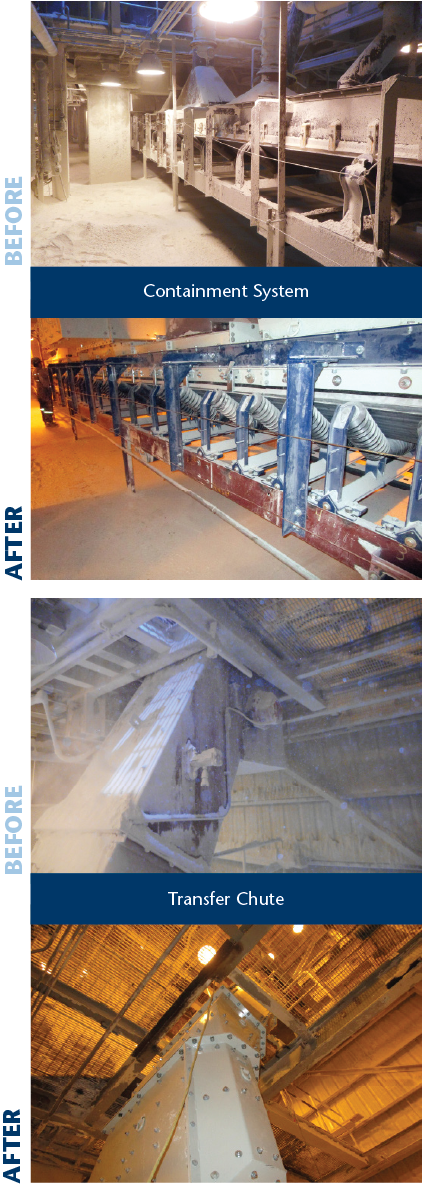Situation![]()
In Rock Springs, Wyoming, a soda ash facility produces soda ash from trona, a naturally occurring mineral used in glass manufacturing. The trona is mined at the plant site from an ore bed located 1500 feet below the surface. The facility was experiencing excessive dust generation, material spillage, and product loss in several locations throughout the plant, which required high amounts of plant labor for cleanup. Particular areas of concern were the impact areas under two crushers (that had zero access for maintenance), conveyor load zone and containment system, and a transfer chute load zone and containment system. All were both outdated and in deplorable condition. As a result, the plant needed a customized solution to help keep the dust contained, prevent material spillage, and liner wear longevity.
The Benetech EPC Approach
Engineered Transfer System
- New DEM designed loading chute with AR500 wearliner to ensure a soft and center loaded material profile
- Improved impact rock box with multiple inspection/access doors that incorporate spoon style load chutes
- Rubber headbox entry curtains to reduce entrained air
MaxZone® Skirting System and Belt Support Components
- Benetech designed and installed MaxZone® Skirt Sealing System with peaked hood covers which fully sealed load zones
- Multiple Benetech 1/4” rubber dust curtains fitted to the material profile
- Patented, XN® internal liner “retrofit” assembly
- Benetech B-Plus Seal and Quick Release Clamp Handles
- Long-lasting, high performing AdvantEdge belt cleaners
- Heavy-duty, easy access, dust-tight Inspection Doors
- Installed Simple Slide-Out Impact Idlers under load zones
Successful Results
Benetech worked with the client to improve its transfer chute and load zone systems to improve wear, dusting, and spillage issues. Benetech provided a new state-of-the-art engineered transfer chutes, MaxZone® skirt sealing systems, and load zone components to achieve the following:
- Reduction of plant mitigation labor
- Reduction of airborne dust
- Removal of plant maintenance expenditures
- Increased belt life
- Overall improvement in safety


